NFG0QHB372HS2
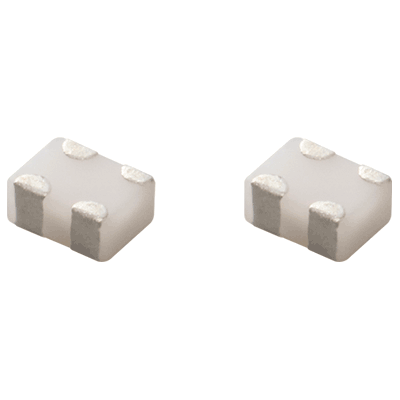
Noise suppression technologies/case study introduction (Consumer)
INDEX
USB was originally developed as a digital interface for connecting computers and peripheral devices, and is now widely used as a general-purpose interface for various applications including mobile devices and the IoT.
The maximum transmission speed was initially 12 Mbps, and this has increased to 480 Mbps for USB2.0 and 5 Gbps for the latest USB3.1 gen1. At the same time, the connector shape has also evolved, and the currently set Type-C connector features enhanced ease of use and power supply capability.
What is the radiation noise situation for USB3.1 devices?
The USB3.1 gen1 noise situation is thought to be similar to that of USB3.0, so a USB3.0 PC and external HDD were connected and the radiated noise was observed. (Fig. 1)
TypeA-TypeB and TypeC-TypeC connection cables were used, and both exhibited noise levels within the regulation values for unwanted radiation noise, so this was not a problem.
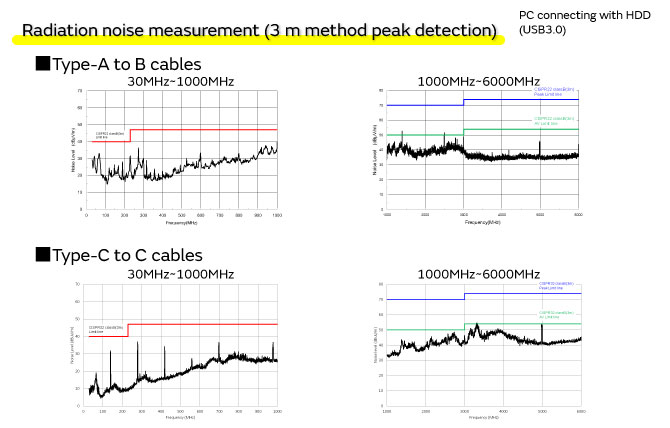
Given the above results, is noise suppression even necessary for USB3.1 devices?
Actually, noise suppression is needed for a different reason than noise regulations for unwanted radiation.
Digital devices increasingly include communication functions.
A typical example would be smartphones. Smartphones contain various digital circuits built into a small frame, and these circuits produce digital noise.
When this noise enters the smartphone antenna, it mixes with the radio waves from the base station, which leads to lower reception sensitivity.
Normally, sufficient countermeasures are taken to prevent noise from entering the antenna directly from the digital boards. However, when a USB or other interface cable is connected to a smartphone, that cable becomes a source of radiation, so the noise entering the antenna increases and the reception sensitivity drops.
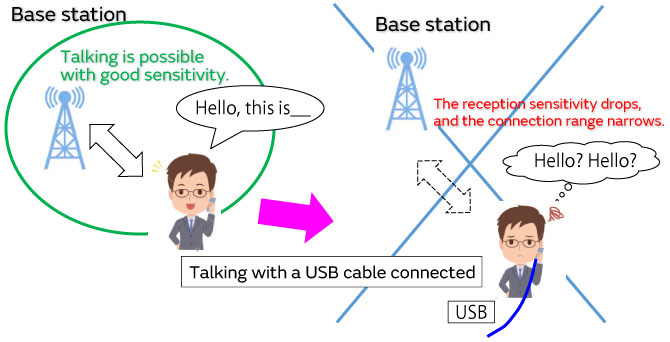
Fig. 3 shows the noise entering the LTE reception block antenna measured in a simple measurement environment.
This shows that when a USB cable is connected, the noise level increases by around 20 dB.
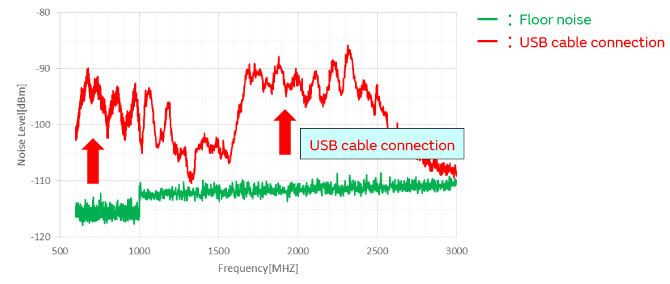
An effective noise suppression method for USB3.1 devices is to apply noise filters to the connector.
However, high-speed differential signals flow in the signal lines, so care must be taken so that the filters used do not adversely affect the signal quality.
Common mode noise filters are a type of noise filter that has almost no impact on differential signals and can effectively remove common mode noise that is the main cause of radiation noise. Therefore, Murata common mode noise filters for USB3.1 are inserted to differential signal line pairs. (Fig. 4)
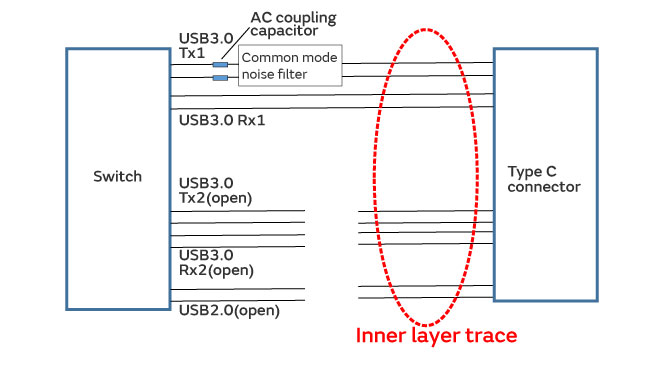
Use of common mode noise filters enables the reduction of the noise level entering the antenna by up to 10 dB as shown in Fig. 5.
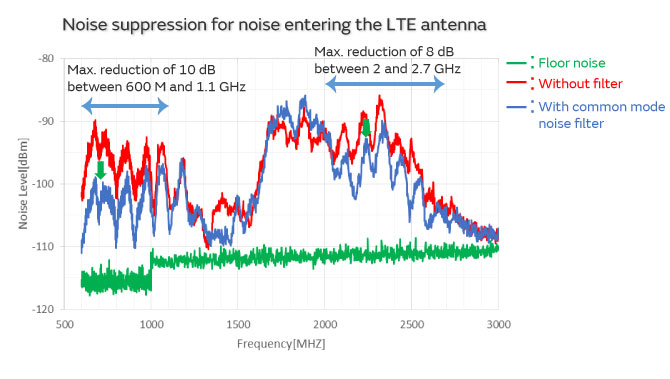
See the following link for the common mode noise filters recommended for USB3.1 gen1.
Recommended common mode noise filters for USB3.1 gen1
Countermeasures other than using noise filters are also taken to further enhance noise levels.
USB cables perform differential transmission of signals using a twisted pair structure that does not easily radiate noise.
However, noise entering the cable shielding may be radiated from the shielding, so the GND was improved as a countermeasure.
In the measured device, the USB connector and the board were originally connected using a single screw and multiple finger gaskets.
The USB connector frame and the smartphone board GND were connected using copper foil tape to create a strong connection and reduce the impedance. Fig. 6 shows the results.
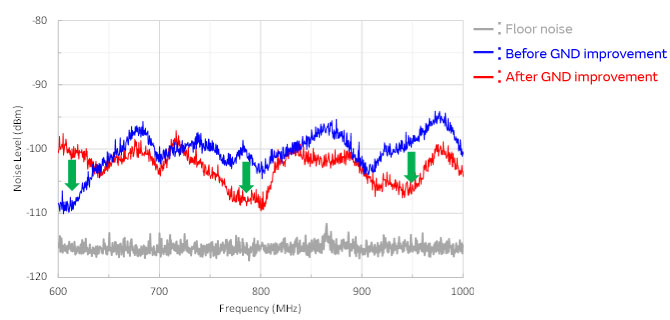
Improvement of the GND reduced the noise level by approximately 6 to 8 dB.
Different USB cables may have different radiated noise levels.
The USB cable originally supplied with the device was changed to a different commercially available USB cable.
Fig. 7 shows the results. In this case, the supplied cable had a lower noise level, with a difference of up to around 10 dB. This shows that it is important to select an appropriate cable for noise suppression.
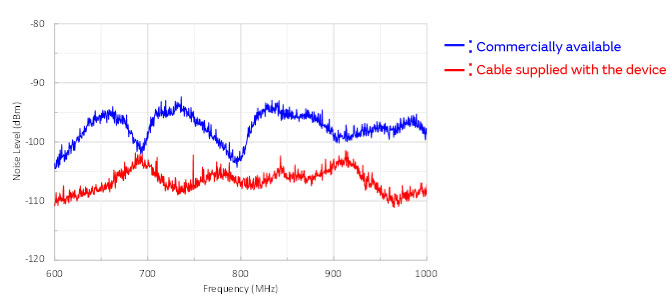
The various countermeasures reduced the noise entering the antenna by up to 20 dB and enhanced the LTE reception sensitivity by approximately 8 dB depending on the band as shown in Fig. 8.
This enhanced the reception level when a USB cable is connected, resulting in a USB device that does not reduce the service range.
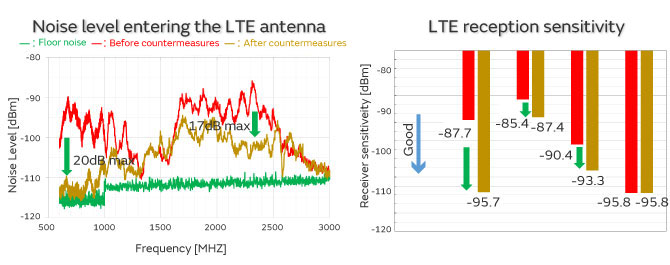
This article introduced examples of noise suppression for USB3.1 gen1. For an introduction of common mode noise filters and common mode choke coils suitable for noise suppression for high-speed differential interfaces, refer to the selection chart below.